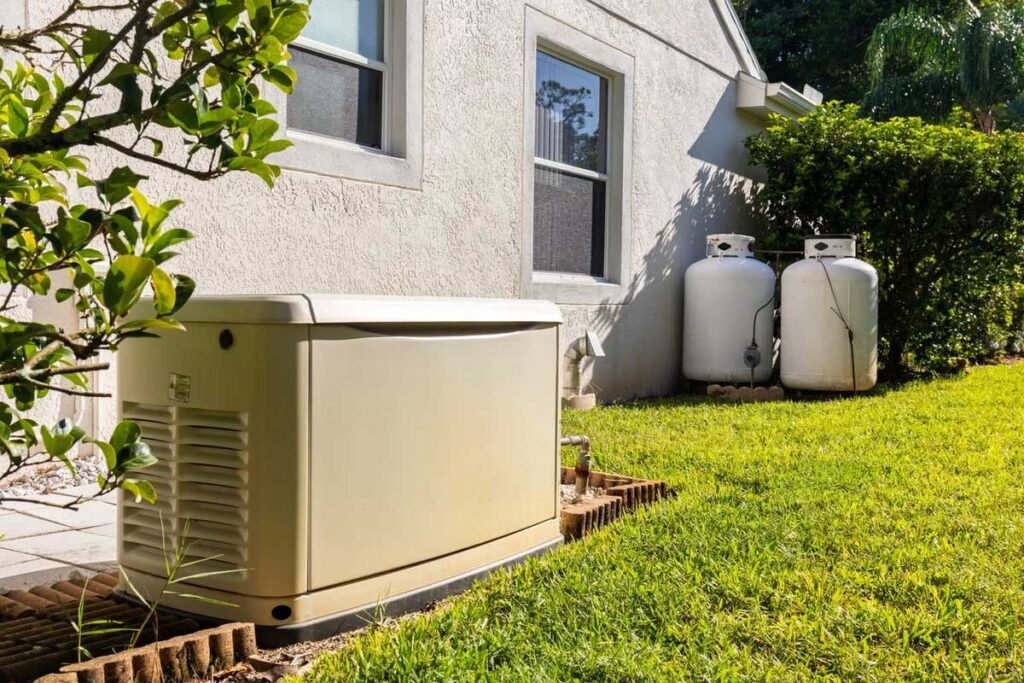Power outages are inconvenient at best and dangerous at worst. Whether caused by storms, grid failures, or unforeseen emergencies, losing electricity can disrupt daily life, halt productivity, and even threaten safety. That’s why more homeowners and businesses are investing in backup generators—a reliable solution to keep the lights on, appliances running, and critical systems functioning. But not all generators are created equal, and choosing the right one requires careful planning.
This blog walks you through the essentials of backup generators: why you need one, how to choose the right type, what installation involves, and how to maintain it for long-term peace of mind.

Why Consider a Backup Generator?
1. Uninterrupted Power
Backup generators automatically kick in when the grid goes down, ensuring continuity in lighting, heating/cooling, refrigeration, and security systems.
2. Safety and Comfort
During extreme weather, power outages can compromise heating, cooling, and medical devices. Generators provide a safety net, keeping your home comfortable and secure.
3. Financial Protection
Power loss can result in spoiled food, frozen pipes, and business downtime. A generator protects your property and investments from such costly damages.
4. Increased Property Value
Homes equipped with backup power systems are increasingly attractive to buyers, especially in areas prone to outages.
Types of Backup Generators: Which One is Right for You?
Portable Generators
- Power Source: Gasoline, propane, or diesel.
- Output: Typically powers select appliances via extension cords or manual transfer switches.
- Pros: Affordable, flexible.
- Cons: Manual setup, limited capacity, fuel storage needed.
Standby Generators
- Power Source: Natural gas or propane.
- Output: Automatically powers entire home or select circuits.
- Pros: Automatic start, high capacity, long run time.
- Cons: Higher cost, requires professional installation.
Inverter Generators
- Power Source: Gasoline or propane.
- Output: Clean, stable power suitable for sensitive electronics.
- Pros: Quiet, efficient, portable.
- Cons: Lower capacity, not ideal for whole-home backup.
Sizing Your Generator: Power Needs Matter
1. Identify Essential Loads
List appliances and systems you want to power during an outage:
- Refrigerator/freezer
- HVAC system
- Lights
- Medical equipment
- Sump pump
- Internet/router
2. Calculate Wattage
Determine the starting and running wattage for each item. Add them up to estimate total power needs. Generators are rated in watts (W) or kilowatts (kW), and your generator should exceed your estimated needs by at least 10-20%.
3. Consider Future Expansion
Think ahead. Will you add more appliances or systems? Choosing a slightly larger generator now can accommodate future needs.
Installation: What to Expect
1. Site Selection
Choose a location that is accessible, meets local codes, and ensures proper ventilation. Standby generators typically require a concrete pad.
2. Permits and Codes
Obtain necessary permits and ensure compliance with local building and electrical codes. Most jurisdictions require inspections.
3. Professional Installation
Hire licensed electricians and/or plumbers (for gas connections). Installation involves:
- Electrical panel integration (manual or automatic transfer switch)
- Fuel source connection (natural gas or propane)
- System testing and verification
4. Transfer Switches: Manual vs. Automatic
- Manual Transfer Switch: Requires you to switch power manually during an outage.
- Automatic Transfer Switch (ATS): Detects outages and switches power automatically. Essential for seamless transitions.
Maintenance Tips: Keep It Ready
A generator is only useful if it works when needed. Regular maintenance ensures reliability:
1. Routine Inspections
Check oil levels, filters, and battery charge regularly. Inspect for leaks or corrosion.
2. Load Testing
Run the generator under load periodically to ensure it can handle the required power.
3. Fuel Management
If using gasoline or diesel, rotate fuel to avoid degradation. Propane and natural gas offer longer storage.
4. Professional Servicing
Schedule annual servicing with a certified technician for in-depth checks, including electrical connections and software updates.
Smart Generator Features: Modern Convenience
Today’s generators offer smart features for convenience and efficiency:
- Remote Monitoring: Monitor status and receive alerts via smartphone apps.
- Quiet Operation: Sound-dampening technology for minimal noise.
- Self-Diagnostics: Alerts you to maintenance needs automatically.

Real-Life Impact: When Generators Save the Day
Scenario 1: Storm Season Protection
A homeowner in a storm-prone area installed a standby generator with ATS. During a multi-day outage, the generator powered the entire home, including HVAC, keeping the family safe and comfortable.
Scenario 2: Business Continuity
A small business installed a portable generator with a manual transfer switch. During a blackout, critical equipment stayed operational, avoiding revenue loss and maintaining customer trust.
Environmental Considerations
Generators emit emissions and consume fuel, but options exist to minimize impact:
- Propane and Natural Gas: Cleaner-burning than gasoline or diesel.
- Solar-Powered Generators: Ideal for small loads and eco-conscious users.
- Hybrid Systems: Combine solar and traditional fuel for flexibility.
Incentives and Regulations
Check for:
- Rebates and Tax Credits: Some areas offer financial incentives for installing backup power.
- Local Codes: Requirements on noise levels, placement, and fuel storage.
- Insurance Discounts: Backup systems may lower premiums.
Conclusion: Power Preparedness is Peace of Mind
Choosing the right backup generator ensures you’re never left in the dark. From basic needs to full-home backup, the right system offers safety, comfort, and continuity. With proper planning, professional installation, and regular maintenance, your generator becomes a reliable ally in any power outage. Invest today, and power your future with confidence.
